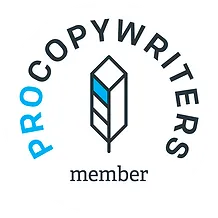I’m writing some tone of voice guidelines and, honestly, they are taking forever.
I know what you’re thinking. How long does it take to write ‘friendly and honest’ in a nice font? We have the idea of guidelines as instructive and, providing the actual development has been done, summing it all up should be simple.
But, actually, it’s not the guidelines themselves that are taking a long time. It’s everything that comes before them.
Telling people how to write is the easy part. The catch is in telling them why.
Why why is important
I learned to drive when I was, like, 30. And my instructor was incredible. But for all of her guidance on what to do, it became clear that understanding why was going to be the secret to real retention.
I’d spent evenings Googling how the clutch worked. I’d watch other cars on the road and work out why they did (or didn’t) do what they were supposed to. And all of that made me more able to get the information into a long-term part of my brain, rather than going in one ear and out the other.
With tone of voice guidelines, it’s all a waste of time, money and energy unless people actually use them. And that’s two challenges in one – making people care enough to read them properly, and then getting that information to stick.
Logic (not the rapper)
We all have different ways of learning. Not everybody needs to see a diagram of a clutch. But in every area of copywriting, branding and tone of voice, the logic that sits behind the copy is every bit as important as the copy itself.
Yes, you’re trying to sell someone on an idea. But the most effective way to do that is to make the idea seem obvious. A given. Just logical.
That’s why guidelines I put together always work through the cause and effect relationships that mean the brand adopts a specific tone.
In short, it’s a structure that looks something like…
- A brand behaves a certain way
- Those behaviours imply personality traits
- Those personality traits translate into an appropriate tone of voice
- That tone of voice might shift slightly across different touchpoints
As you can see, the actual tone of voice stuff – the adjectives, the examples – is only 50% of what good guidelines need to include. And you just can’t get to those without working your way through the logic.
So why is this tone of voice taking so long? Well, it’s not. But for guidelines to be effective, the tone of voice part itself is just a tiny part of what needs to be done.
Need the kind of guidelines people actually adopt?
I can help with that. But not quickly.
